The Carcasses
We have been looking into various amp designs and kits. We knew we wanted to build a tube amp, and were looking at a number of low power designs (class A, mostly). Our primary goal was for an amp with good, smooth, all tube distortion (classic rock and blues). We had been using a 70's Fender Super Six living in a Twin Reverb cabinet, running through two EV-12L speakers. We really like this amp, but it was too powerful to drive to natural tube distortion for what we were doing those days (but the clear tone was there). We were thinking about maybe building a tube preamp setup to be capable of overdriving, but then we came across two Fender Hot Rod Deville chassis' on eBay. A friend of mine has one, and we have repaired a couple of others, and it seemed like a nice amp. True, the reverb and effects chain circuits are solid state, but it seemed like they would make a good foundation for an amp project. They were both complete (just missing a few knobs), and sounded like they would need minimal repair, so we bid on both of them and ended up winning both (ought to at least be able to get one working between the two).
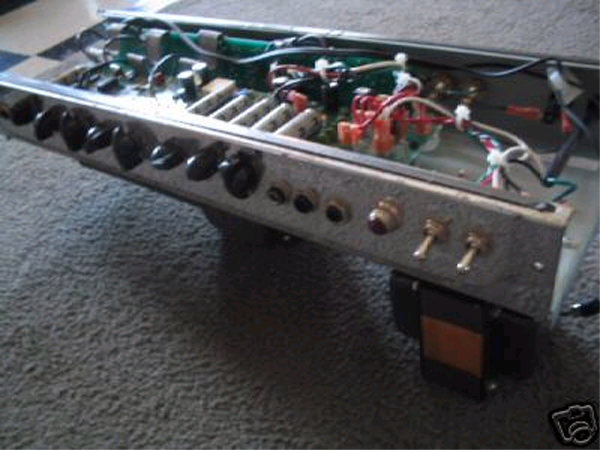
Picture of actual item from eBay auction site
As it turned out, one was from 1996, and the other from 2002, but other than that, they appeared to be identical. They were listed as Blues Devilles, but they are actually Hot Rod Devilles. The Hot Rod Devilles have 3 channels (clean, drive, and more drive), and the pedal just controls the channel switching - the Blues Devilles only have clean and drive channels, and the foot switch also controls the reverb. Both versions put out about 60 watts. A lot of people seem to think that the "dirter" channel is useless. This was not really a problem, as I tend to use pedals for distortion, and the rest of the amp circuit is very similar. As an extra bonus, each came with a foot pedal (no reverb pans, though, but they were easy to find).
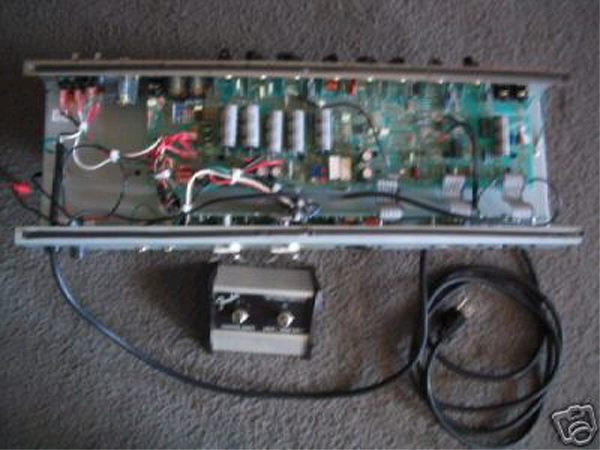
Picture of actual item from eBay auction site
We were able to find good copies of the schematics. We also found a number of sites with info on various mods (some for the Hot Rod Deluxe preamp section, which is basically identical to the Hot Rod Deville preamp section).
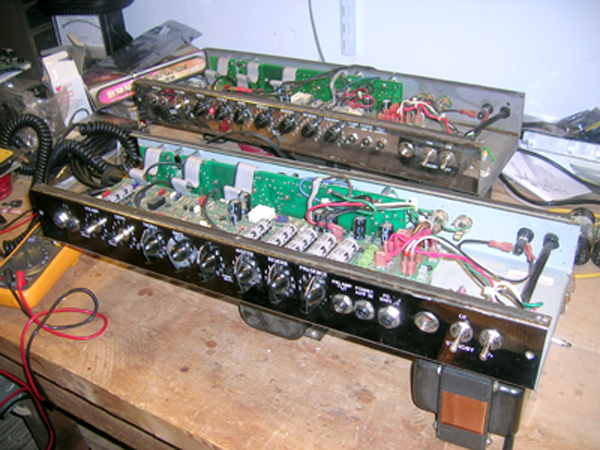
On the bench - first look at them
They actually looked pretty good - the 2002 chassis panel was a bit cleaner than the 1996 (makes sense). Both panels had some of the labels rubbed off, but the chrome itself was pretty good. The insides were quite clean, and looked to be in very good shape - no evidence of heat issues. We decided to check out the newer one first.
We installed some old used tubes we had (only had one 12AX7, so we used it in the V1 position, and used two 12AT7s for the other two stages - this is basically the same tube, with a little less gain - fine for this test). We connected the chassis to a speaker cabinet and fired it up. It came right to life, and sounded like it was in good shape. The only issue we could find right away was the Middle control, which would not turn at all. It is a 25K linear control. One of the mods we had looked at advised raising this to a larger value. We happened to have a 50k audio pot that was the right style (pc mount), so we decided to use it as a replacement. The same site also recommended another minor mod for the middle control, which was to tie the wiper of the control to the outer lug that was connected to the Bass control, so we figured we would give that a try as well while we has the chassis apart.
After making sure the filter caps were discharged, we removed the main board. We found we had to remove the boards that hold the tubes first, then we were able to get the main board out without removing any wires except a ground wire. We were then able to remove the old Mid control.
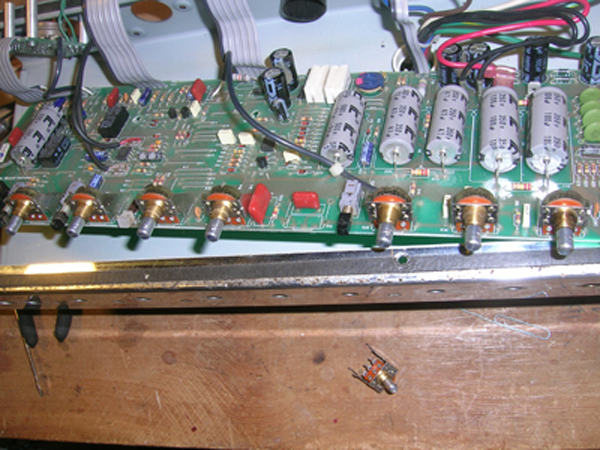
Removing the Middle pot
These pots are smaller than the older Fender pots, and we are having a hard time finding them on-line. The ones we had were left over from another Fender repair - we had to get them from a Fender dealer, and even he didn't have much of a selection.
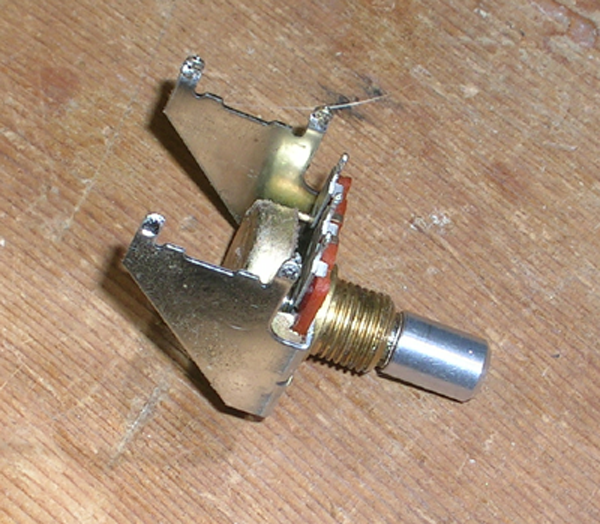
Old Mid pot
Once we had the replacement pot soldered in place, we soldered a jumper between the wiper and outer lug as per the second mod mentioned above.
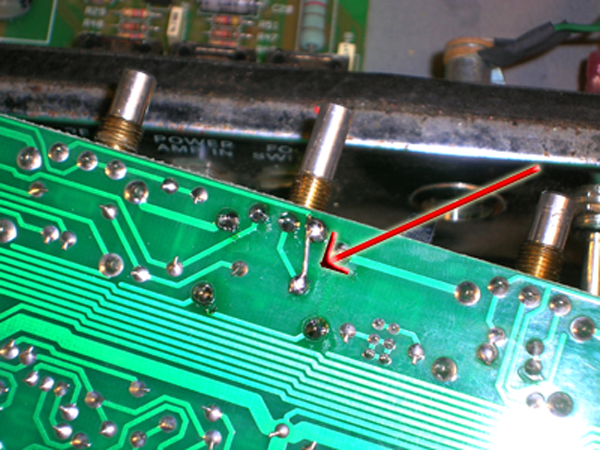
Adding the jumper for the Mid mod
Reassembling the chassis was fairly straight forward, as we hadn't had to remove any of the wires. Yes, we know - as you can see from the picture, we forgot to cut the pot shaft before soldering it in place. It was a bit too long, but we were able to trim it with a hack saw while holding the shaft with a pair of small Vice Grips. 'Doh!
We would later find ourself back in here installing a full cap replacement, and a few more mods. More on this later (this happened after installing the chassis into the finished cab, and realizing there were still some issues with the chassis).
Due to the fact that our eyes aren't what they used to be, plus the issue of some of the labeling for the controls being rubbed off, we came up with the idea of using different color chicken head knobs. We ordered some colored knobs, and this is our scheme: Red for Drive and Master (they are both for the 'dirty' channels), Blue for Volume (clean channel), Black for three tone controls, Green for reverb, and Yellow for Presence. This way, while we are playing (without our glasses), we will be able to tell at a glance how things are set, and should be able to adjust things without having to read the labels.


